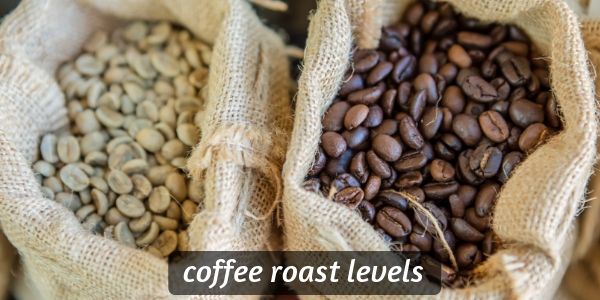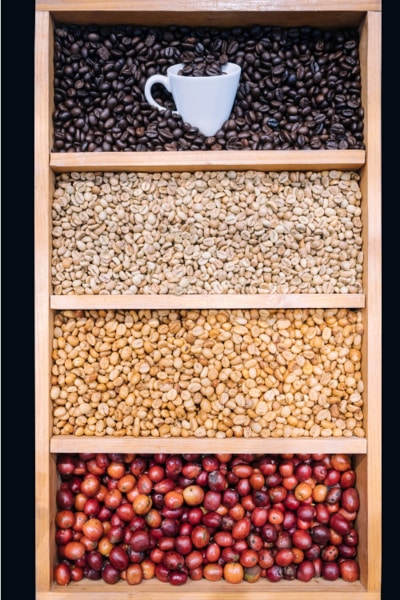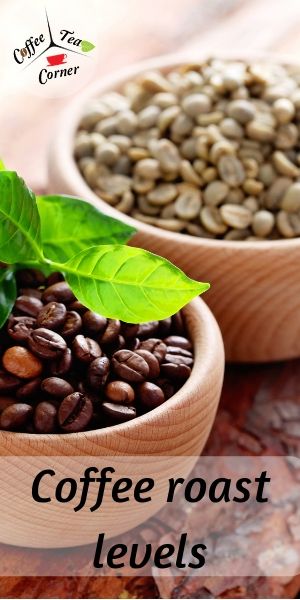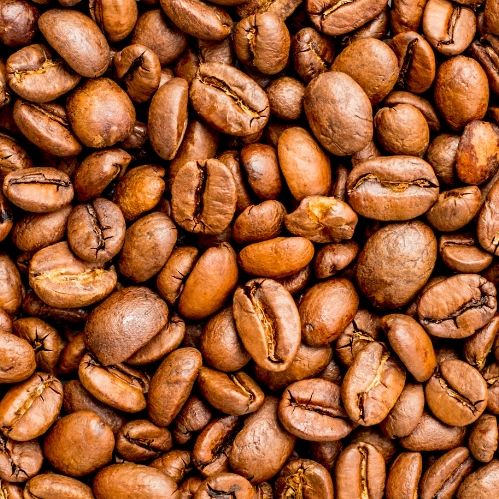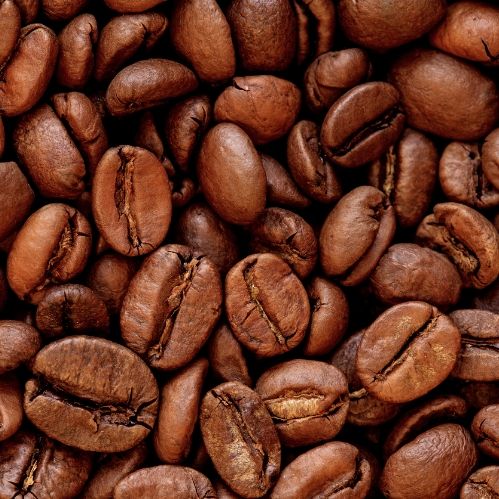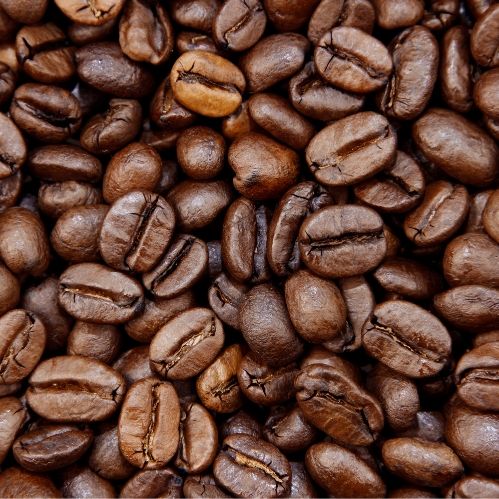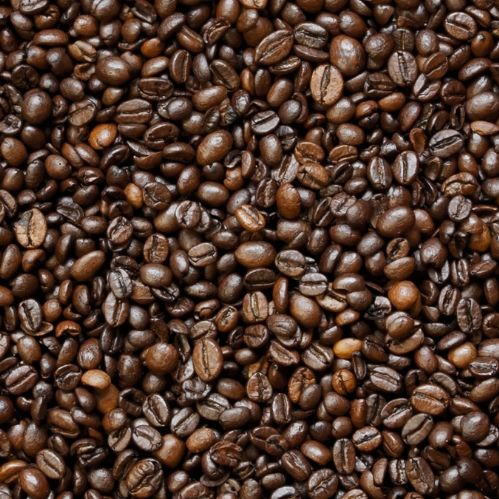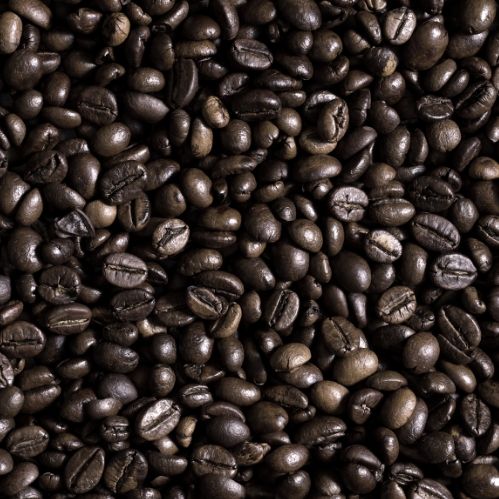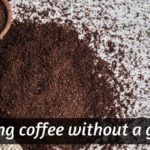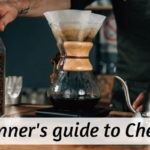Roasting levels in coffee vary from brand to brand, and I'm pretty sure they're not very well explained on the back of coffee packs.
This leads to people not knowing what they're buying, and lots of confusion as to what roast level is best, or even if there is such a thing.
So let's sit down and talk about all the coffee roasting levels, and how you can figure out each of them.
Table of Contents
What does roast level mean in coffee ?
First, let's deal with this. A roast level in coffee is the point at which the coffee roaster was stopped, leading the coffee beans to a certain state.
This means the coffee beans may have cracked for the first time, or just before the first time, they may have released most of their natural oils, and so on.
You're going to find all sorts of coffee roast levels printed on the coffee you buy. They range from light to dark, and contain everything in between. Often they've got names that have nothing to do with the color or actual degree of roasting.
In general, lighter roasts are lighter in body, more watery, but also have a more specific flavor.
Darker roasts have more body to them, but a rather bland and simple flavor.
Why does coffee need to be roasted ?
We need our coffee roasted because we can't consume it otherwise. Fresh coffee beans are inedible, and undrinkable and would not offer an acceptable brew.
This means that the coffee beans must be roasted, at least a little, so we can properly make a cup of coffee. The preferred level of coffee roasting will vary from person to person, and as such opinions are very mixed.
But we can at least all agree that coffee does need roasting. Otherwise it has no flavor, much like tea leaves.
Recommended post:Roast Defects In Coffee
Coffee's journey from fresh bean to brewed cup
Just before we get right into the actual coffee bean roasting, let's take a quick look at how the beans go from fresh to brewed. This is so you get a clearer picture of what's happening with the beans, and your coffee in general.
Once the coffee cherries are picked, and the pits removed (the beans themselves) they are green. They're first dried, and left to sit at room temperature.
Once dry, the coffee beans are then transferred to an industrial oven (in the case of large coffee companies), and they are slowly roasted.
As the beans roast, they crack since they expand in size. It sounds a lot like popcorn, some beans starting sooner and some later. The cracks are important, and there a few that you need to be aware of.
The temperature at which the beans are roasted, as well as the total amount of time they spend in the oven all contribute to the final roasting level.
In short, the longer and hotter the roast, the darker/higher the roast level.
Most of the coffee you find on the shelves in supermarkets are medium, medium-dark, some even just dark roasts.
This is because when roasting in large batches, it's fairly hard to control each bean's roast level, and it's easier to let all the beans reach a darker roast than stop the oven too early and end up with very uneven beans.
Now that we've figured that, let's talk about the actual roast levels, one by one. These are the main ones, but you'll find some companies roasting their coffees somewhere in between these levels.
(If you like this article so far, you can pin it to your Pinterest board by clicking the image below. The article continues after the image.)
1. Light roasts are the first step
These are the first acceptable coffee beans that come out of the roasting oven, but are not often found in stores. They're somewhere from the beginning to the middle of the first crack of the coffee beans.
Usually this means that your coffee is starting to smell like actual coffee. Before, as it was reaching this point, there was a very grassy/hay smell to them.
Now they're beginning to smell more like roast coffee, and they have a nice, milk coffee color to them. These are also what some people call Blonde roasts, New England Roasts, Light City Roast, American Roast, Cinnamon Roast.
Your oven should be around 405 F/207 C, and your coffee beans will not have a sheen of oil on them yet.
This kind of coffee can sometimes be found in supermarkets, though it's not very common. When you do get your hands on such a roast, you can taste the origin of the coffee beans.
Meaning, if there are any fruity, or honey, or wine notes to your coffee beans, you'll be able to detect them here. Darker roasts tend to mute the specific notes of coffee.
Also, this coffee is going to be more acidic in taste, and have less body to it than a medium roast.
If you were to drink this coffee black, it wouldn't be the best, but it would show you the origin of the coffee best.
Update September 2019:
Recently, we've come to know of white coffee. This is lighter than light roast, and as such does not have the typical look, smell or flavor of coffee. They're pulled out of the roaster just before the first crack starts.
Instead it's a rather nutty, earthy kind of flavor, and it brews a pale, murky amber color, as opposed to regular coffee's dark brown color.
It's not a common coffee type, and still more of a gourmet thing.
2. Medium-light keeps more of the origin flavor
The next step is to roast the beans to medium-light. This roast level keeps less of the origin flavor than a pure light roast, but more than a medium.
Your coffee will have a little more body to it than a light roast, when brewed. It's still not going to have any coffee oils on the surface, and the first crack has come and gone.
Right now, you need to know we're between the end of the first crack, and the beginning of the second one. Some beans may start cracking now, but only a few.
This is also know as a City Roast, or a City Roast Plus, depending on where you're from.
Your oven will be at a 425 F/220 C, and the smell of roast will be more pronounced.
This roast is more common than light roast in, and is better tasting.
3. Medium is the most common roast, and the most balanced
The most common roast level, and the best that history has decided.
Medium roasts offer a great balance between origin flavors, body, and roast taste.
The coffee is the most flavorful and satisfying at this point, and will shine best in French press or pour-over coffee.
Your oven should be at 435 F/223 C, and your coffee beans should have a hint of coffee oil on them.
The beans should be just at the beginning of the 2nd crack, and barely getting into the half of it.
The roast smell will be more pronounced, and you might even see a bit of smoke coming out of the oven. That's normal, as the beans dry out and the oil comes to the surface.
Another name for medium roast is Full City roast, and Full City Roast Plus. The Plus goes a little into medium-dark territory.
4. Medium-dark is a little stronger tasting
This is the middle of the 2nd crack, and the coffee beans will be clearly oily. There will be more smoke, and you will need to act quickly if you want to stop your roasting process here.
The oven will be at 440 F/226 C, and the taste of 'roast' will be overshadowing the actual flavor of the coffee by this point.
Not much of the origin of the beans will be left, meaning you could throw any ol' coffee bean in the oven and have it taste almost the same with this roast.
The beans will be a very dark brown by this point. If you want a name, this is also known as Vienna roast.
5. Dark roasts hide most of the flavor
The darker we go, the less flavor we get. More of the burnt and roast flavor will be present, which also means that the beans will start to lose their quality, no matter how they started.
This is pretty much any roast past 445 F/229 C, also known as French/Italian/Spanish roast.
The 2nd crack is tapering off or has already stopped. If you let it run a bit more, you might hear the beginning of the 3rd crack, but no one is meant to go that far.
Now, this roast is going to be very 'thin' tasting, in that most of the coffee's body will be burnt away, and this is evident when drinking a cup of coffee brewed from these beans.
The color will be nearly black, possibly turning greyish in some cases.
Roasting your coffee beans at home
Alright, now you know the most important bits about coffee roast levels. You know what to look for by sight, sound, smell, and visual cues.
Now, you could just buy fresh, green coffee beans and roast them at home. I seriously recommend you have patience with this if you want to go ahead.
Getting the roast level right depends very much on the roasting oven you've got, and how skilled you are.
Most people who aren't roasters by trade are not skilled, so there's a learning curve.
For this a comprehensive book on coffee roasting is going to help you in the long run. What I've given you here is the absolute basics, and it's just scratching the surface.
There is so much more to roasting coffee, and Scott Rao (author) is much better at explaining the intricacies in this book - The Coffee Roaster's Companion.
It's not a terribly long read, and it's got some very concise instructions.
He is quite personal in his approach to how to roast coffee, but does leave room for your own opinion on the matter. You might find you agree with his tastes, or don't.
Still, the principles found in this book are pretty much the foundation for roasting coffee properly.
You can find the listing on Amazon here, and read the reviews as well.
The next step is to get yourself an actual coffee roasting machine, if you're serious about this. I'll give you two options here, since some might be on a budget.
The professional coffee roaster for your home
If you intend to roast coffee at home and want to do this regularly, then you're going to need a very good machine.
This one, made by Behmor, will allow you to roast up to 1 pound of coffee per load.
It's got 5 separate settings, and you can always override it manually if you need to.
You can see what you're roasting, as it's got a nice window to keep an eye on the beans. There's a learning curve, as with all things. But it's one of the best coffee roasters you can fit into your home and still get quality roasts.
It's easy enough to clean, and you'll be having a good time as you learn how to roast your own coffee, to the perfect degree.
You can find the listing on Amazon here, and read the reviews as well.
The best low budget coffee roaster
If you're on a budget, I've got you covered.
It's a much smaller roasting 'machine', though it's more manual than automated. Okay, it's not automated at all.
In fact, it's a very good tool for beginners learning to roast their own coffee.
It's got a small capacity, so you won't be roasting for the whole month. But you can roast up to 2.5 oz of coffee beans, which is going to last you quite a few coffee cups.
Which is probably better, since this way your coffee is bound to be fresh each time you drink it.
As for how to use it, honestly it's kind of fun. You're meant to keep putting it on the fire (or stove top) and picking it up again, and shaking/rolling the contents every now and then.
You're going to hear the cracks as they happen, since the rear hole is both for cooling, airflow, and a great audio cue.
It's a bit of workout, and it's a lot like making popcorn in a skillet at home.
But who could be mad while roasting coffee ? And for the comparatively lower price, I think this is a steal.
You can check the listing on Amazon here, and read the reviews as well.
Final thoughts
Roasting coffee is kind of a big deal, and knowing the different levels you can roast to, and how they each affect the final brew will help things out immensely.
The levels I've described here should give you a clear grasp of the main things you should know.
And if you're planning on roasting your own coffee at home, then I hope I gave you a good idea of what you can start with.
If you want to know more about coffee or tea, feel free to check the related articles below. Who knows what else you might find ?

